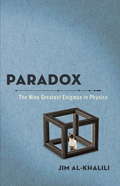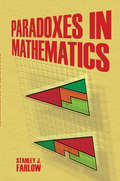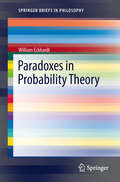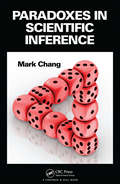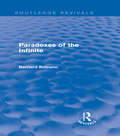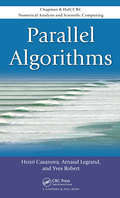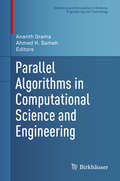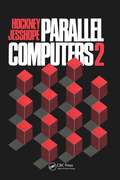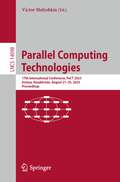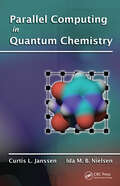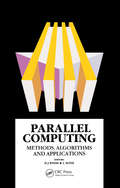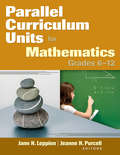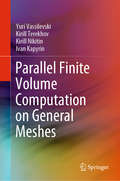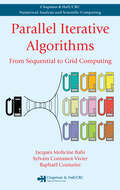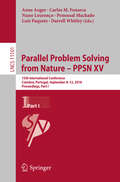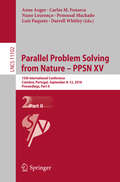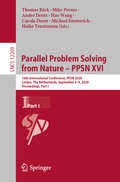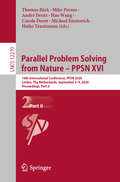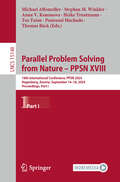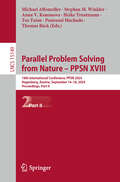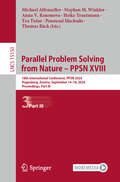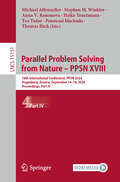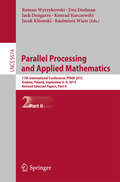- Table View
- List View
Paradox
by Jim Al-KhaliliA fun and fascinating look at great scientific paradoxes. Throughout history, scientists have come up with theories and ideas that just don't seem to make sense. These we call paradoxes. The paradoxes Al-Khalili offers are drawn chiefly from physics and astronomy and represent those that have stumped some of the finest minds. For example, how can a cat be both dead and alive at the same time? Why will Achilles never beat a tortoise in a race, no matter how fast he runs? And how can a person be ten years older than his twin? With elegant explanations that bring the reader inside the mind of those who've developed them, Al-Khalili helps us to see that, in fact, paradoxes can be solved if seen from the right angle. Just as surely as Al-Khalili narrates the enduring fascination of these classic paradoxes, he reveals their underlying logic. In doing so, he brings to life a select group of the most exciting concepts in human knowledge. Paradox is mind-expanding fun.
Paradoxes Between Truth and Proof (Synthese Library #494)
by Giorgio Venturi Mattia PetroloThis book is a collection of essays that offer original logical and philosophical investigations into the century-long endeavor to understand paradoxes. It bridges the gap between the two most prominent traditions in the analysis of paradoxes: the truth-theoretic and proof-theoretic approaches. The truth-theoretic tradition stems from Alfred Tarski's solution to the semantic paradoxes, while the proof-theoretic tradition dates back to Dag Prawitz's analysis of set-theoretic paradoxes in terms of structural proof theory. Rather than viewing these traditions as competing perspectives, this volume advocates for the idea that a deeper understanding of paradoxes requires insights from both truth-theoretic and proof-theoretic conceptions of language and meaning. Although the collection does not aim to be exhaustive, it seeks to highlight the vast scope of the subject and its deep connections to various fields of inquiry. The essays are organized into four sections: the first focuses on methodology, the second and third examine paradoxes through the conventional lenses of logical investigation—semantics and syntax—, and the fourth presents a selection of paradoxes that extend beyond the interplay between syntax and semantics, exploring other dimensions of human rationality.
Paradoxes and Inconsistent Mathematics
by Zach WeberLogical paradoxes – like the Liar, Russell's, and the Sorites – are notorious. But in Paradoxes and Inconsistent Mathematics, it is argued that they are only the noisiest of many. Contradictions arise in the everyday, from the smallest points to the widest boundaries. In this book, Zach Weber uses “dialetheic paraconsistency” – a formal framework where some contradictions can be true without absurdity – as the basis for developing this idea rigorously, from mathematical foundations up. In doing so, Weber directly addresses a longstanding open question: how much standard mathematics can paraconsistency capture? The guiding focus is on a more basic question, of why there are paradoxes. Details underscore a simple philosophical claim: that paradoxes are found in the ordinary, and that is what makes them so extraordinary.
Paradoxes in Mathematics (Dover Books on Mathematics)
by Stanley J. FarlowThere's more than one way to define a paradox, and this intriguing book offers examples of every kind. Stanley J. Farlow, a prominent educator and author, presents a captivating mix of mathematical paradoxes: the kind with surprising, nonintuitive outcomes; the variety that rely on mathematical sleight-of-hand to impress the unwary observer; and the baffling type with a solution that passes all understanding.Students and puzzle enthusiasts will find plenty of thought-provoking enjoyment mixed with a bit of painless mathematical instruction among these twenty-eight conundrums. Some of them involve counting, some deal with infinity, and others draw on principles of geometry and arithmetic. None requires an extensive background in higher mathematics. Challenges include The Curve That Shook the World, a variation on the famous Monty Hall Problem, Space Travel in a Wineglass, Through Cantor's Looking Glass, and other fun-to-ponder paradoxes.
Paradoxes in Probability Theory
by William EckhardtParadoxes provide a vehicle for exposing misinterpretations and misapplications of accepted principles. This book discusses seven paradoxes surrounding probability theory. Some remain the focus of controversy; others have allegedly been solved, however the accepted solutions are demonstrably incorrect. Each paradox is shown to rest on one or more fallacies. Instead of the esoteric, idiosyncratic, and untested methods that have been brought to bear on these problems, the book invokes uncontroversial probability principles, acceptable both to frequentists and subjectivists. The philosophical disputation inspired by these paradoxes is shown to be misguided and unnecessary; for instance, startling claims concerning human destiny and the nature of reality are directly related to fallacious reasoning in a betting paradox, and a problem analyzed in philosophy journals is resolved by means of a computer program.
Paradoxes in Scientific Inference
by Mark ChangParadoxes are poems of science and philosophy that collectively allow us to address broad multidisciplinary issues within a microcosm. A true paradox is a source of creativity and a concise expression that delivers a profound idea and provokes a wild and endless imagination. The study of paradoxes leads to ultimate clarity and, at the same time, in
Paradoxes of the Infinite (Routledge Revivals)
by Bernard BolzanoParadoxes of the Infinite presents one of the most insightful, yet strangely unacknowledged, mathematical treatises of the 19th century: Dr Bernard Bolzano’s Paradoxien. This volume contains an adept translation of the work itself by Donald A. Steele S.J., and in addition an historical introduction, which includes a brief biography as well as an evaluation of Bolzano the mathematician, logician and physicist.
Parallel Algorithms (Chapman & Hall/CRC Numerical Analysis and Scientific Computing Series)
by Yves Robert Henri Casanova Arnaud LegrandFocusing on algorithms for distributed-memory parallel architectures, Parallel Algorithms presents a rigorous yet accessible treatment of theoretical models of parallel computation, parallel algorithm design for homogeneous and heterogeneous platforms, complexity and performance analysis, and essential notions of scheduling. The book extract
Parallel Algorithms in Computational Science and Engineering (Modeling and Simulation in Science, Engineering and Technology)
by Ananth Grama Ahmed H. SamehThis contributed volume highlights two areas of fundamental interest in high-performance computing: core algorithms for important kernels and computationally demanding applications. The first few chapters explore algorithms, numerical techniques, and their parallel formulations for a variety of kernels that arise in applications. The rest of the volume focuses on state-of-the-art applications from diverse domains. By structuring the volume around these two areas, it presents a comprehensive view of the application landscape for high-performance computing, while also enabling readers to develop new applications using the kernels. Readers will learn how to choose the most suitable parallel algorithms for any given application, ensuring that theory and practicality are clearly connected. Applications using these techniques are illustrated in detail, including:Computational materials science and engineeringComputational cardiovascular analysisMultiscale analysis of wind turbines and turbomachineryWeather forecastingMachine learning techniquesParallel Algorithms in Computational Science and Engineering will be an ideal reference for applied mathematicians, engineers, computer scientists, and other researchers who utilize high-performance computing in their work.
Parallel Computers 2: Architecture, Programming and Algorithms
by R.W Hockney C.R JesshopeSince the publication of the first edition, parallel computing technology has gained considerable momentum. A large proportion of this has come from the improvement in VLSI techniques, offering one to two orders of magnitude more devices than previously possible. A second contributing factor in the fast development of the subject is commercialization. The supercomputer is no longer restricted to a few well-established research institutions and large companies. A new computer breed combining the architectural advantages of the supercomputer with the advance of VLSI technology is now available at very attractive prices. A pioneering device in this development is the transputer, a VLSI processor specifically designed to operate in large concurrent systems. Parallel Computers 2: Architecture, Programming and Algorithms reflects the shift in emphasis of parallel computing and tracks the development of supercomputers in the years since the first edition was published. It looks at large-scale parallelism as found in transputer ensembles. This extensively rewritten second edition includes major new sections on the transputer and the OCCAM language. The book contains specific information on the various types of machines available, details of computer architecture and technologies, and descriptions of programming languages and algorithms. Aimed at an advanced undergraduate and postgraduate level, this handbook is also useful for research workers, machine designers, and programmers concerned with parallel computers. In addition, it will serve as a guide for potential parallel computer users, especially in disciplines where large amounts of computer time are regularly used.
Parallel Computing Technologies: 17th International Conference, PaCT 2023, Astana, Kazakhstan, August 21–25, 2023, Proceedings (Lecture Notes in Computer Science #14098)
by Victor MalyshkinThis book constitutes the refereed proceedings of the 17th International Conference on Parallel Computing Technologies, PaCT 2023, held in Astana, Kazakhstan, during August 21-25, 2023. The 15 full papers included in this book were carefully reviewed and selected from 23 submissions. They were organized in topical sections as follows: automatic programming and program tuning; frameworks and services; algorithms; and distributed systems management.
Parallel Computing in Quantum Chemistry
by Curtis L. Janssen Ida M. NielsenAn In-Depth View of Hardware Issues, Programming Practices, and Implementation of Key MethodsExploring the challenges of parallel programming from the perspective of quantum chemists, Parallel Computing in Quantum Chemistry thoroughly covers topics relevant to designing and implementing parallel quantum chemistry programs. Focu
Parallel Computing: Methods, Algorithms and Applications
by David J Evans; C SuttiParallel Computing: Methods, Algorithms and Applications presents a collection of original papers presented at the international meeting on parallel processing, methods, algorithms, and applications at Verona, Italy in September 1989.
Parallel Curriculum Units for Mathematics, Grades 6–12
by Dr Jann H. Leppien Dr Jeanne H. PurcellMaximize your mathematics curriculum to challenge all students This collection of lessons from experienced teachers provides multifaceted examples of rigorous learning opportunities for mathematics students in Grades 6–12. The four sample units focus on fractions, linear programming, geometry, and quadratic relationships. The authors provide user-friendly methods for instruction and demonstrate how to differentiate the lessons for the benefit of all students. Included are standards-based strategies that guide students through: Understanding secondary mathematics concepts Discovering connections between mathematics and other subjects Developing critical thinking skills Connecting mathematics learning to society through the study of real-world data, proportional reasoning, and problem solving
Parallel Finite Volume Computation on General Meshes
by Yuri Vassilevski Kirill Terekhov Kirill Nikitin Ivan KapyrinThis book presents a systematic methodology for the development of parallel multi-physics models and its implementation in geophysical and biomedical applications. The methodology includes conservative discretization methods for partial differential equations on general meshes, as well as data structures and algorithms for organizing parallel simulations on general meshes. The structures and algorithms form the core of the INMOST (Integrated Numerical Modelling Object-oriented Supercomputing Technologies) platform for the development of parallel models on general meshes. The authors consider applications for addressing specific geophysical and biomedical challenges, including radioactive contaminant propagation with subsurface waters, reservoir simulation, and clot formation in blood flows. The book gathers all the components of this methodology, from algorithms and numerical methods to the open-source software, as well as examples of practical applications, in a single source, making it a valuable asset for applied mathematicians, computer scientists, and engineers alike.
Parallel Iterative Algorithms: From Sequential to Grid Computing
by Jacques Mohcine Bahi Sylvain Contassot-Vivier Raphael CouturierFocusing on grid computing and asynchronism, Parallel Iterative Algorithms explores the theoretical and practical aspects of parallel numerical algorithms. Each chapter contains a theoretical discussion of the topic, an algorithmic section that fully details implementation examples and specific algorithms, and an evaluation of the advantages and dr
Parallel Problem Solving from Nature – PPSN XV: 15th International Conference, Coimbra, Portugal, September 8–12, 2018, Proceedings, Part I (Lecture Notes in Computer Science #11101)
by Nuno Lourenço Penousal Machado Anne Auger Carlos M. Fonseca Luís Paquete Darrell WhitleyThis two-volume set LNCS 11101 and 11102 constitutes the refereed proceedings of the 15th International Conference on Parallel Problem Solving from Nature, PPSN 2018, held in Coimbra, Portugal, in September 2018. The 79 revised full papers were carefully reviewed and selected from 205 submissions. The papers cover a wide range of topics in natural computing including evolutionary computation, artificial neural networks, artificial life, swarm intelligence, artificial immune systems, self-organizing systems, emergent behavior, molecular computing, evolutionary robotics, evolvable hardware, parallel implementations and applications to real-world problems. The papers are organized in the following topical sections: numerical optimization; combinatorial optimization; genetic programming; multi-objective optimization; parallel and distributed frameworks; runtime analysis and approximation results; fitness landscape modeling and analysis; algorithm configuration, selection, and benchmarking; machine learning and evolutionary algorithms; and applications. Also included are the descriptions of 23 tutorials and 6 workshops which took place in the framework of PPSN XV.
Parallel Problem Solving from Nature – PPSN XV: 15th International Conference, Coimbra, Portugal, September 8–12, 2018, Proceedings, Part II (Lecture Notes in Computer Science #11102)
by Nuno Lourenço Penousal Machado Anne Auger Carlos M. Fonseca Luís Paquete Darrell WhitleyThis two-volume set LNCS 11101 and 11102 constitutes the refereed proceedings of the 15th International Conference on Parallel Problem Solving from Nature, PPSN 2018, held in Coimbra, Portugal, in September 2018. The 79 revised full papers were carefully reviewed and selected from 205 submissions. The papers cover a wide range of topics in natural computing including evolutionary computation, artificial neural networks, artificial life, swarm intelligence, artificial immune systems, self-organizing systems, emergent behavior, molecular computing, evolutionary robotics, evolvable hardware, parallel implementations and applications to real-world problems. The papers are organized in the following topical sections: numerical optimization; combinatorial optimization; genetic programming; multi-objective optimization; parallel and distributed frameworks; runtime analysis and approximation results; fitness landscape modeling and analysis; algorithm configuration, selection, and benchmarking; machine learning and evolutionary algorithms; and applications. Also included are the descriptions of 23 tutorials and 6 workshops which took place in the framework of PPSN XV.
Parallel Problem Solving from Nature – PPSN XVI: 16th International Conference, PPSN 2020, Leiden, The Netherlands, September 5-9, 2020, Proceedings, Part I (Lecture Notes in Computer Science #12269)
by Michael Emmerich Thomas Bäck Hao Wang Heike Trautmann André Deutz Mike Preuss Carola DoerrThis two-volume set LNCS 12269 and LNCS 12270 constitutes the refereed proceedings of the 16th International Conference on Parallel Problem Solving from Nature, PPSN 2020, held in Leiden, The Netherlands, in September 2020. The 99 revised full papers were carefully reviewed and selected from 268 submissions. The topics cover classical subjects such as automated algorithm selection and configuration; Bayesian- and surrogate-assisted optimization; benchmarking and performance measures; combinatorial optimization; connection between nature-inspired optimization and artificial intelligence; genetic and evolutionary algorithms; genetic programming; landscape analysis; multiobjective optimization; real-world applications; reinforcement learning; and theoretical aspects of nature-inspired optimization.
Parallel Problem Solving from Nature – PPSN XVI: 16th International Conference, PPSN 2020, Leiden, The Netherlands, September 5-9, 2020, Proceedings, Part II (Lecture Notes in Computer Science #12270)
by Michael Emmerich Thomas Bäck Hao Wang Heike Trautmann André Deutz Mike Preuss Carola DoerrThis two-volume set LNCS 12269 and LNCS 12270 constitutes the refereed proceedings of the 16th International Conference on Parallel Problem Solving from Nature, PPSN 2020, held in Leiden, The Netherlands, in September 2020. The 99 revised full papers were carefully reviewed and selected from 268 submissions. The topics cover classical subjects such as automated algorithm selection and configuration; Bayesian- and surrogate-assisted optimization; benchmarking and performance measures; combinatorial optimization; connection between nature-inspired optimization and artificial intelligence; genetic and evolutionary algorithms; genetic programming; landscape analysis; multiobjective optimization; real-world applications; reinforcement learning; and theoretical aspects of nature-inspired optimization.
Parallel Problem Solving from Nature – PPSN XVIII: 18th International Conference, PPSN 2024, Hagenberg, Austria, September 14–18, 2024, Proceedings, Part I (Lecture Notes in Computer Science #15148)
by Thomas Bäck Penousal Machado Heike Trautmann Anna V. Kononova Tea Tušar Michael Affenzeller Stephan M. WinklerThis multi-volume LNCS set, LNCS 15148-15151, constitutes the refereed proceedings of the 18th International Conference on Parallel Problem Solving from Nature, PPSN 2024, held in Hagenberg, Austria, in September 2024. The 101 full papers presented in these proceedings were carefully reviewed and selected from 294 submissions. The papers presented in these four volumes are organized in the following topical sections: Part I: Combinatorial Optimization; Genetic Programming; Fitness Landscape Modeling and Analysis. Part II: Benchmarking and Performance Measures; Automated Algorithm Selection and Configuration; Numerical Optimization; Bayesian- and Surrogate-Assisted Optimization. Part III: Theoretical Aspects of Nature-Inspired Optimization; (Evolutionary) Machine Learning and Neuroevolution; Evolvable Hardware and Evolutionary Robotics. Part IV: Multi-Objective Optimization; Real-World Applications.
Parallel Problem Solving from Nature – PPSN XVIII: 18th International Conference, PPSN 2024, Hagenberg, Austria, September 14–18, 2024, Proceedings, Part II (Lecture Notes in Computer Science #15149)
by Thomas Bäck Penousal Machado Heike Trautmann Anna V. Kononova Tea Tušar Michael Affenzeller Stephan M. WinklerThis multi-volume LNCS set, LNCS 15148-15151, constitutes the refereed proceedings of the 18th International Conference on Parallel Problem Solving from Nature, PPSN 2024, held in Hagenberg, Austria, in September 2024. The 101 full papers presented in these proceedings were carefully reviewed and selected from 294 submissions. The papers presented in these four volumes are organized in the following topical sections: Part I: Combinatorial Optimization; Genetic Programming; Fitness Landscape Modeling and Analysis. Part II: Benchmarking and Performance Measures; Automated Algorithm Selection and Configuration; Numerical Optimization; Bayesian- and Surrogate-Assisted Optimization. Part III: Theoretical Aspects of Nature-Inspired Optimization; (Evolutionary) Machine Learning and Neuroevolution; Evolvable Hardware and Evolutionary Robotics. Part IV: Multi-Objective Optimization; Real-World Applications.
Parallel Problem Solving from Nature – PPSN XVIII: 18th International Conference, PPSN 2024, Hagenberg, Austria, September 14–18, 2024, Proceedings, Part III (Lecture Notes in Computer Science #15150)
by Thomas Bäck Penousal Machado Heike Trautmann Anna V. Kononova Tea Tušar Michael Affenzeller Stephan M. WinklerThis multi-volume LNCS set, LNCS 15148-15151, constitutes the refereed proceedings of the 18th International Conference on Parallel Problem Solving from Nature, PPSN 2024, held in Hagenberg, Austria, in September 2024. The 101 full papers presented in these proceedings were carefully reviewed and selected from 294 submissions. The papers presented in these four volumes are organized in the following topical sections: Part I: Combinatorial Optimization; Genetic Programming; Fitness Landscape Modeling and Analysis. Part II: Benchmarking and Performance Measures; Automated Algorithm Selection and Configuration; Numerical Optimization; Bayesian- and Surrogate-Assisted Optimization. Part III: Theoretical Aspects of Nature-Inspired Optimization; (Evolutionary) Machine Learning and Neuroevolution; Evolvable Hardware and Evolutionary Robotics. Part IV: Multi-Objective Optimization; Real-World Applications.
Parallel Problem Solving from Nature – PPSN XVIII: 18th International Conference, PPSN 2024, Hagenberg, Austria, September 14–18, 2024, Proceedings, Part IV (Lecture Notes in Computer Science #15151)
by Thomas Bäck Penousal Machado Heike Trautmann Anna V. Kononova Tea Tušar Michael Affenzeller Stephan M. WinklerThis multi-volume LNCS set, LNCS 15148-15151, constitutes the refereed proceedings of the 18th International Conference on Parallel Problem Solving from Nature, PPSN 2024, held in Hagenberg, Austria, in September 2024. The 101 full papers presented in these proceedings were carefully reviewed and selected from 294 submissions. The papers presented in these four volumes are organized in the following topical sections: Part I: Combinatorial Optimization; Genetic Programming; Fitness Landscape Modeling and Analysis. Part II: Benchmarking and Performance Measures; Automated Algorithm Selection and Configuration; Numerical Optimization; Bayesian- and Surrogate-Assisted Optimization. Part III: Theoretical Aspects of Nature-Inspired Optimization; (Evolutionary) Machine Learning and Neuroevolution; Evolvable Hardware and Evolutionary Robotics. Part IV: Multi-Objective Optimization; Real-World Applications.
Parallel Processing and Applied Mathematics
by Roman Wyrzykowski Ewa Deelman Jack Dongarra Konrad Karczewski Jacek Kitowski Kazimierz WiatrThis two-volume set LNCS 9573 and LNCS 9574 constitutes the refereed proceedings of the 11th International Conference of Parallel Processing and Applied Mathematics, PPAM 2015, held in Krakow, Poland, in September 2015. The 111 revised full papers presented in both volumes were carefully reviewed and selected from 196 submissions. The focus of PPAM 2015 was on models, algorithms, and software tools which facilitate efficient and convenient utilization of modern parallel and distributed computing architectures, as well as on large-scale applications, including big data problems.
